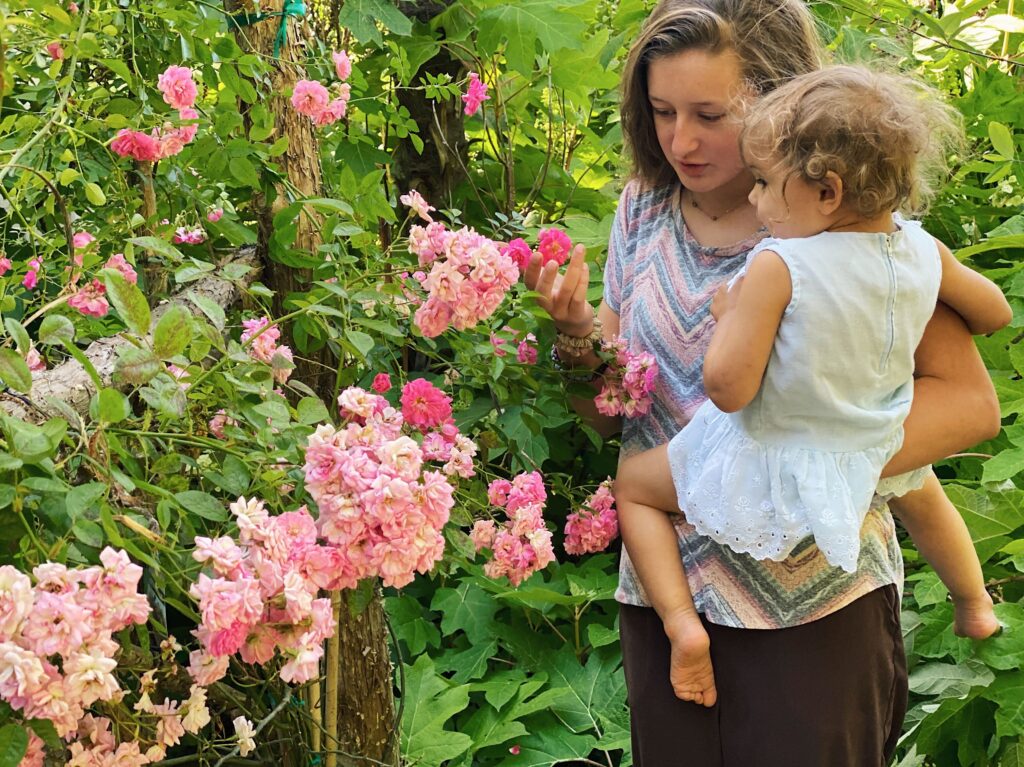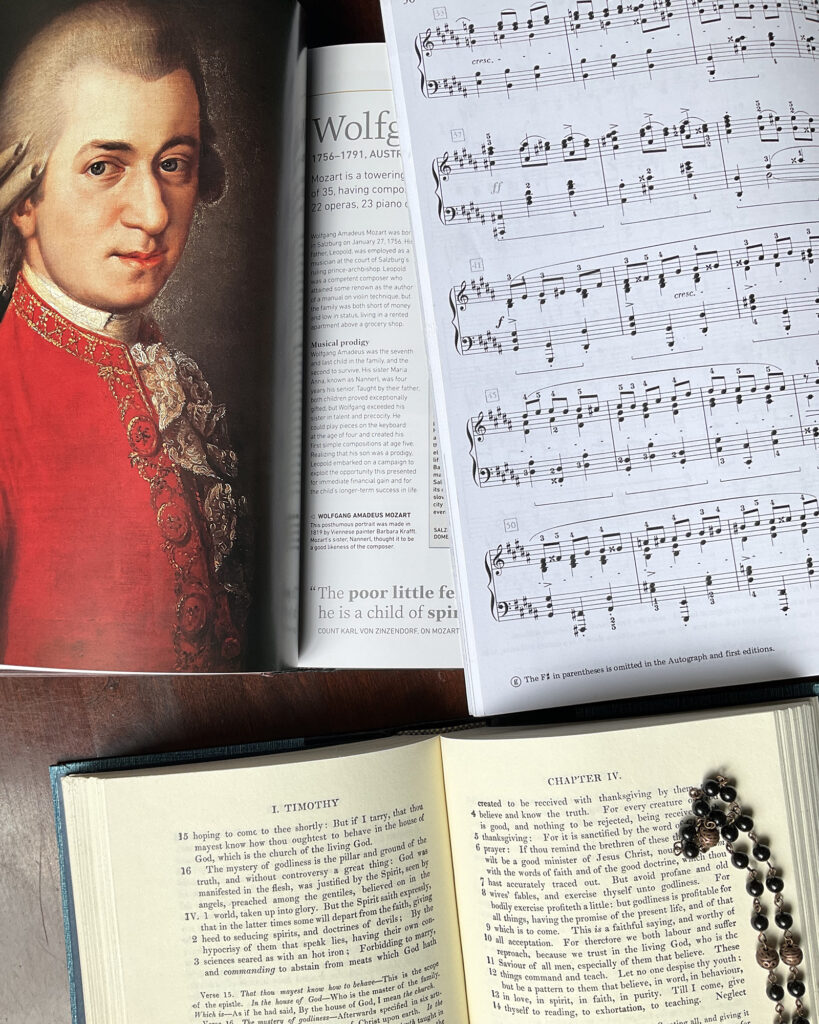The CMP Review — Week of May 1
May 1, 2023
Where do you start when reading The Chronicles of Narnia? Should you begin with The Lion, the Witch and the Wardrobe or The Magician’s Nephew?
Personally, I prefer reading and introducing the series to children in publication order. Not only is this how C.S. Lewis wrote and published the series, but it also allows you to discover Narnia in the same way as Lucy does, and see the characters grow and change over time. I feel many things will not make sense, hold as much meaning to the reader, or lose their magic if read chronologically.
Entering Narnia for the first time through the wardrobe is a magical experience that every reader should have.
Of course, everyone’s reading preferences are different, so feel free to share your own preference in the comments below and let’s have a friendly debate.
@tessakeath
May 2, 2023

“Are you cross? Change your thoughts. Are you tired of trying? Change your thoughts. Are you craving for things you are not to have? Change your thoughts; there is a power within you, your own will, which will enable you to turn your attention from thoughts that make you unhappy and wrong, to thoughts that make you happy and right.”
So wrote Charlotte Mason in Home Education, previewing Principle 17 of her Twenty Principles: “the way to will effectively is to turn our thoughts from that which we desire but do not will.” Deceptively simple, it seems too simple for some. Could this really be the key to the will? And does this “way of the will” really deserve a place in the Short Synopsis of Charlotte Mason’s method?
As if anticipating these questions from modern readers, Charlotte Mason called up her physician friend to write about the topic in more detail. Drawing upon a vast range of knowledge and expertise, the “beloved physician” accepted the challenge.
At a PNEU gathering in 1912, the Lady Campbell announced to her audience: “One word as to formation of habit. Read Miss Mason on this subject in the Home Education Series, and get Miss Webb’s admirably helpful pamphlet on Thought-turning as a factor in the training of Character.” Perhaps you’ve read the first source. Isn’t it about time that you read the second? Now you can read or hear it here.
@artmiddlekauff
May 3, 2023

My youngest son left home for Montana to spend a season working on a flower farm. It’s both physically & mentally demanding and he tells me he’s asleep before his head even hits the pillow.
He’s learning a lot and loving it, though. Anyhow, I always find it interesting to know what CM-grads are doing and thought I’d share his experience with you.
@rbaburina
May 4, 2023

We recently completed our term’s study of Mozart. I was deeply moved as we watched a recorded performance of the Mass in C minor, one of the greatest human compositions. My eye lingered first on the conductor, his gray hair signifying his wisdom and experience, qualifying him to interpret this masterpiece. My eye roamed across the faces of the performers, none appearing many years younger than the venerable conductor. The camera occasionally showed the audience, and I saw people like me. The message seemed clear: age is a prerequisite to understand and appreciate Mozart.
Then my mind played a trick on me as I imagined the composer entering the theater. He wrote the mass when he was 26 years old. He would have been the youngest man in the theater. Would the ushers have shooed him away? Would the conductor have given him a second look? Would any of the musicians have consented to be led by someone not much older than a child?
None of it made sense. A 26-year-old cannot appreciate the Mass in C minor. But a 26-year-old wrote it.
On Sunday I met a 26-year-old who was wrapping up his theology degree. His special focus is on Paul’s use of the Old Testament, so I asked him about the New Perspective. He mentioned a book by Markus Bockmuehl, which I own, and a few authors that I didn’t recognize. Then I asked myself what I was doing. This man is just a child, I thought. What does he have to teach me about theology?
Then I remembered a verse I had memorized decades ago: 1 Timothy 4:12. “Don’t let anyone look down on you because you are young.” I thought about Mozart composing for a conductor twice his age. I thought about music appreciation with my son who is 15. And I thought about this young theologian. At least I will never forget his name: it’s Timothy.
@artmiddlekauff
May 5, 2023

I absolutely love that the big kids don’t feel like they’re “too old” to make mud pies with the little ones!
The little ones love it.
And the big kids do too!
What a blessing for all of us, actually.
😍
@antonella.f.greco
May 6, 2023

You know when your friend moves a few thousand kilometres away, and you haven’t seen him in four years, and he visits, and you take him back to your shared childhood haunts?
It’s the absolute best!
Friends across the miles…
It’s a balm to the weary soul and a tiny glimpse into heaven. And it’s breathtakingly beautiful (for me) to watch! 🙏🏻💝
@antonella.f.greco
May 7, 2023

Few of Charlotte Mason’s poems have shined more brightly in the hearts of her closest friends than “In the Light.” According to Essex Cholmondeley, the poem is among those contained in a notebook that “can probably be dated 1871.” It was first published on the front page of the December 1902 issue of The Parents’ Review. Then it found a home in The Saviour of the World, published in 1911.
In 1923, In Memoriam was published, containing essays remembering Charlotte Mason. Some were written by members of her inner circle, including Ellen Parish, whom Mason appointed as principal of the House of Education. Parish entitled her essay “Miss Mason’s Message,” and in it she explained “the source of Miss Mason’s teaching.” She included several stanzas of this poem, citing it as one of the foundational expressions of Mason’s thought.
In April 1930, Miss Parish wrote a new paper entitled “Education is the Handmaid of Religion.” It was published in the November issue of The Parents’ Review and closed with the complete text of this cherished poem by her beloved mentor.
The poem contains eight stanzas and captures a dialog between two souls. The first soul is outside the light; the second is “In the Light.” In the final stanza, the first soul expresses her desire to come join the second in the light. But she faces a serious barrier: she feels that she is too vile to enter in. The poem ends with an emotionally powerful and theologically rich response.
Written in 1871, the poem was still being published and read nearly 60 years later. But this poem continues to shine even today. A century and a half after its composition, we invite you to read or hear Miss Mason’s call to join her in the light.
@artmiddlekauff